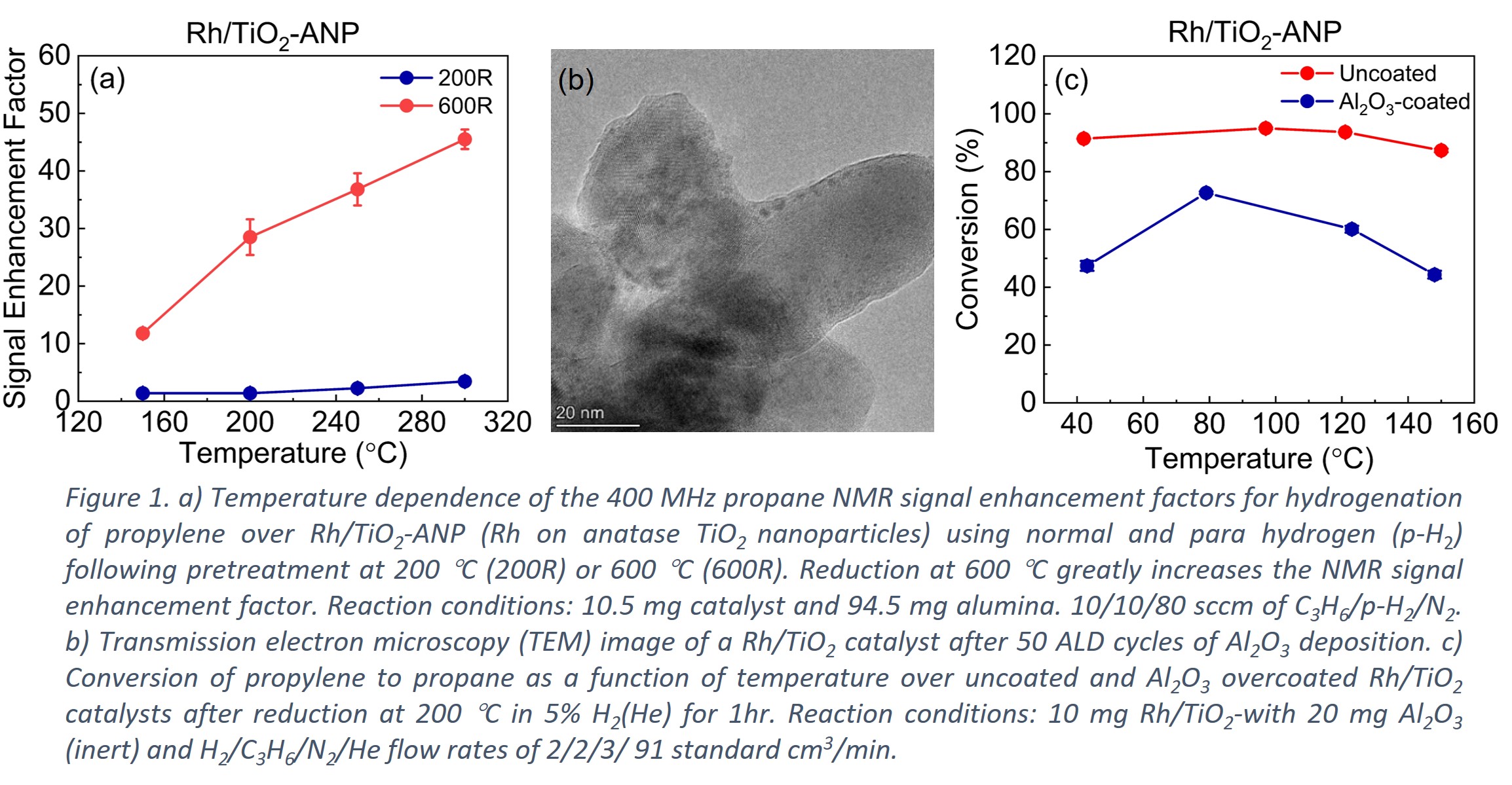2023 AIChE Annual Meeting
(559f) Rational Design of Rh/TiO2 Catalyst Via Atomic Layer Deposition (ALD) to Improve Hyperpolarization of Allyl Esters from Parahydrogen
Authors
Lapak, M., University of Florida
Bowers, C. R., University of Florida
Hagelin Weaver, H., University of Florida
Atomic layer deposition (ALD) has emerged as a powerful tool for the precise design and synthesis of catalytic materials at the atomic level. One approach to tuning reaction selectivities and increasing catalyst stability involves depositing an oxide layer over the active metal using ALD to block highly active and non-selective catalytic sites while at the same time preventing sintering of the metal nanoparticles. Rh/TiO2 catalysts can potentially benefit from this strategy, since they are highly active hydrogenation catalysts, but their selectivity in the hyperpolarization of allyl acetate from parahydrogen remains low demonstrated in our previous paper.1 Induction of strong metal-support interactions (SMSIs) resulting in TiOx migration over the Rh particles has been shown to improve pairwise addition of parahydrogen to propylene to yield hyperpolarized propane with significant NMR signal enhancement (Figure 1a). However, the TiOx migration via SMSIs cannot be precisely controlled. To carefully control the growth of oxide on the Rh particles, 50 ALD cycles using trimethylaluminum (TMA) and water vapor were applied to create a core-shell structure with Al2O3 covering Rh nanoparticles on the TiO2 support (Figure 1b). The Al2O3 layer decreased the propylene conversion to propane (Figure 1c) and is expected to improve the pairwise selectivity of hydrogenation of propargyl and vinyl esters in solution. In addition, the Al2O3 layer is expected to stabilize the Rh nanoparticles against Rh leaching into solution, which can pave the way for utilizing these catalysts in liquid phase reactions to synthesize hyperpolarized metabolites such as acetate and pyruvate for in-vivo MRI use.
(1) Zhao, T. Y.; Lapak, M. P.; Behera, R.; Zhao, H.; Ferrer, M.-J.; Weaver, H. E. H.; Huang, W.; Bowers, C. R. Perpetual hyperpolarization of allyl acetate from parahydrogen and continuous flow heterogeneous hydrogenation with recycling of unreacted propargyl acetate. Journal of Magnetic Resonance Open 2022, 12-13, 100076.
